Low-cost flights are ideal for those who desire adventure, but have limited funds at their disposal. Packing a bag with maximum dimensions of 56 x 45 x 25 cm, however, can be a real challenge, especially if the traveler can’t pack less clothing and loves to buy souvenirs. Here, one traveler recounts overcoming her carry-on spatial limitations thanks to the advice of a packing expert.
I was at Gate 13 of Charles de Gaulle Airpot after having just spent a wonderful few days in Paris for Carnival with my university friends. To save money, we booked a low-cost carrier, packed hand baggage only, and stayed at a mixed dormitory room in a Latin Quarter youth hostel. Our perfect trip comprised long walks along the Seine, evening strolls through the streets of the fabled City of Light, museum visits to admire our favorite artworks, and shopping for bric-a-brac in Montmartre and the Marais. Unaware of the shadow that loomed over me, I chatted away with my friends while we queued at the gate, when a steward approached and asked me to place my hand luggage in the orange baggage gauge. With the confidence of someone who knows they’re right, I went to the luggage inspection container, attempted to insert my carry-on and went pale…it didn’t fit.
How is it possible – you may wonder at this point – to be so naive as to bring luggage that is too big for a low-cost flight and expect to get away with it? The point is exactly this: My luggage was itself was not too big by nature, but rather a soft and shapeless bag that was bent out of shape thanks to a poorly placed sleeping bag and a couple of items that I bought in France. Botolo (the nickname given to my suitcase after the incident) had become more paunchy and cumbersome than on the first leg of the trip.
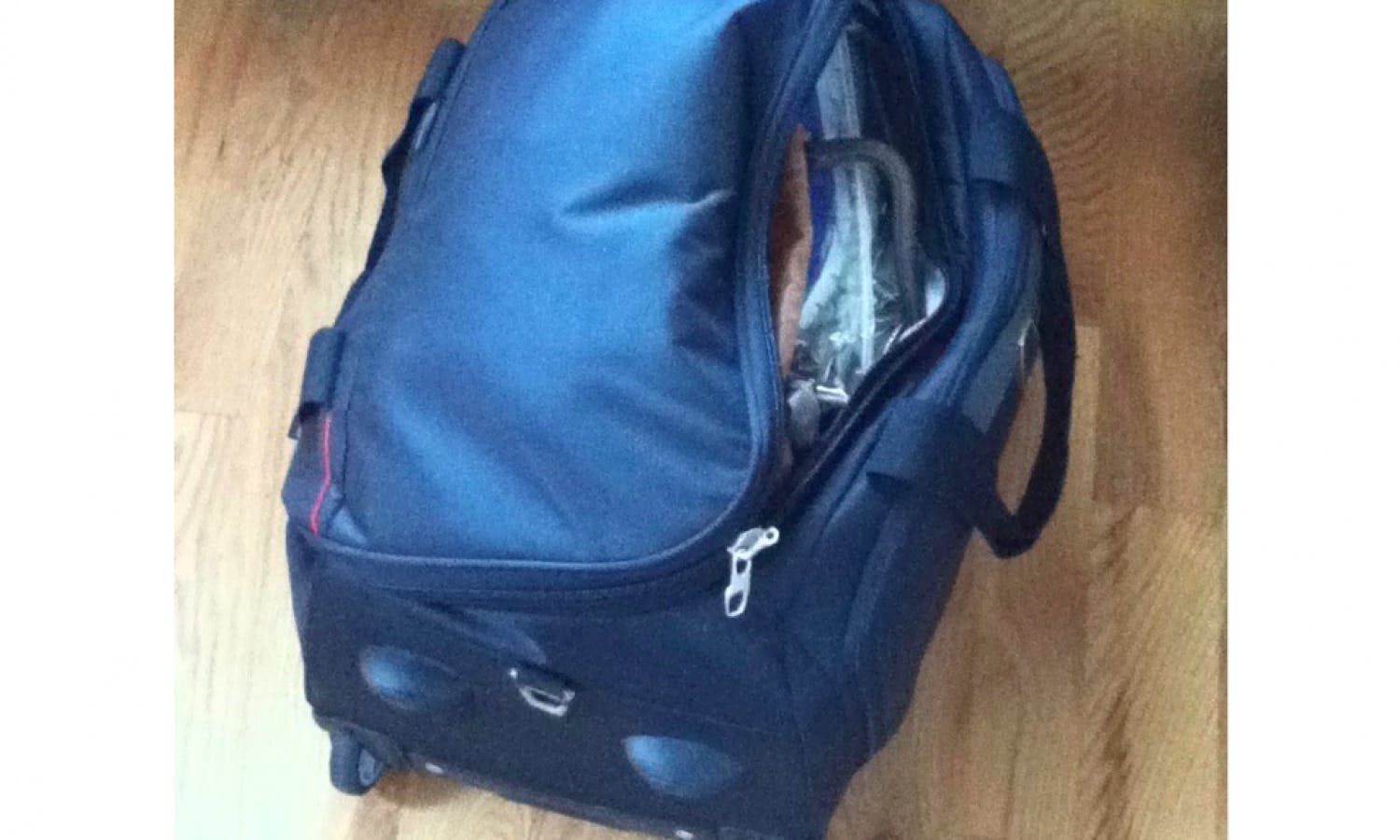
My duffel bag with wheels, nicknamed Botolo
I did not want to give in and pay the extra fee to check my bag as it would negate my efforts to maintain a low-cost vacation. So, after various unsuccessful attempts at fitting the bag in the gauge, regardless of the steward with his intimidating “do not push mademoiselle, do not push” directions, I opened the suitcase and decided to wear all the clothing. I put two skirts on over my pants, layered up on the sweaters and t-shirts, and wore leggings as a scarf. At that point, the suitcase only contained a sleeping bag, soaps, and a poster that I bought at the Orsay Museum. Botolo had deflated and, in the silence of the steward and his angry gaze, entered easily into the measuring device.
As you can imagine, it was very stressful and embarrassing (my friends, however, were laughing so hard they could barely stand up), but this experience taught me that the real problem is not the amount of stuff that you put in the hand luggage, but where you put it. And yes, it also taught me that it is important that the bag has a solid exterior that doesn’t get bent out of shape if packed the wrong way.
In order to fix my mistakes and to let you avoid the troubles I went through in Paris, I asked a specialist to prepare my carry-on for Edinburgh. I bought a discreet solid bag so that I wouldn’t attract the interest of the budget carrier’s staff who are looking to slap on an extra fee.
The expert is actor Emanuele Turetta whose job’s nomadic nature takes him around Italy and the world. He learned how to pack a bag quickly and in a functional manner that optimizes all the available space. His method is based on the principle that one should not occupy space, but create it using the volumes of objects and clothing.
In August, for my six-day trip to Edinburgh, I started with shoes and clothing that were suitable for wind and rain, but not too bulky: three shirts, three sweaters, two pairs of pants, two pairs of leggings, running shoes and a leather jacket. The suitcase also contained a shoulder bag, two guides, pajamas, a laundry bag, some medicine, a vanity case with soaps and make-up, a camera and a hardcover book. While in Edinburgh I bought a beautiful tweed coat that seemed tailored especially for me, a poster of a painting at the Scottish National Gallery, a felt hat and Fringe Festival brochures. All the objects have returned to Milan with me in 56 x 45 x 25 cm, thanks to Emanuele’s expert method.
Today, I will share this with you.
First, I placed the softest and thin clothes such as trousers, leggings and T-shirts on the bottom of the suitcase, folded and narrow enough to slip into the grooves of the suitcase structure. Then we folded my sweaters into perfect squares, a shape that yields even, easy-to-fill empty spaces.
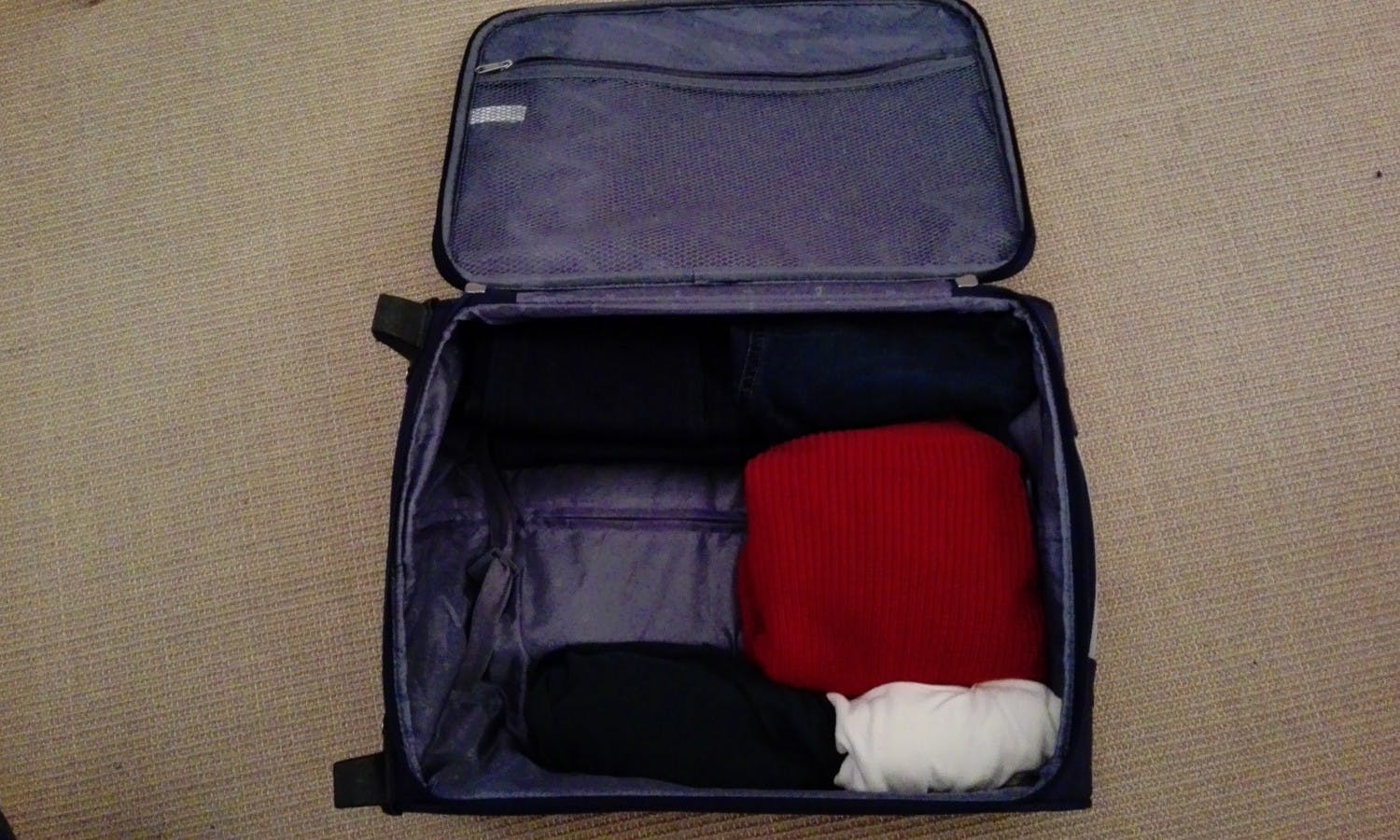
Step 1: Fill the grooves between the canvas and the suitcase frame with T-shirts, sweaters and pants
We continued by placing less flexible items such as the laundry bag, toiletries and medicines into the empty spaces created by the t-shirts, sweaters and trousers.
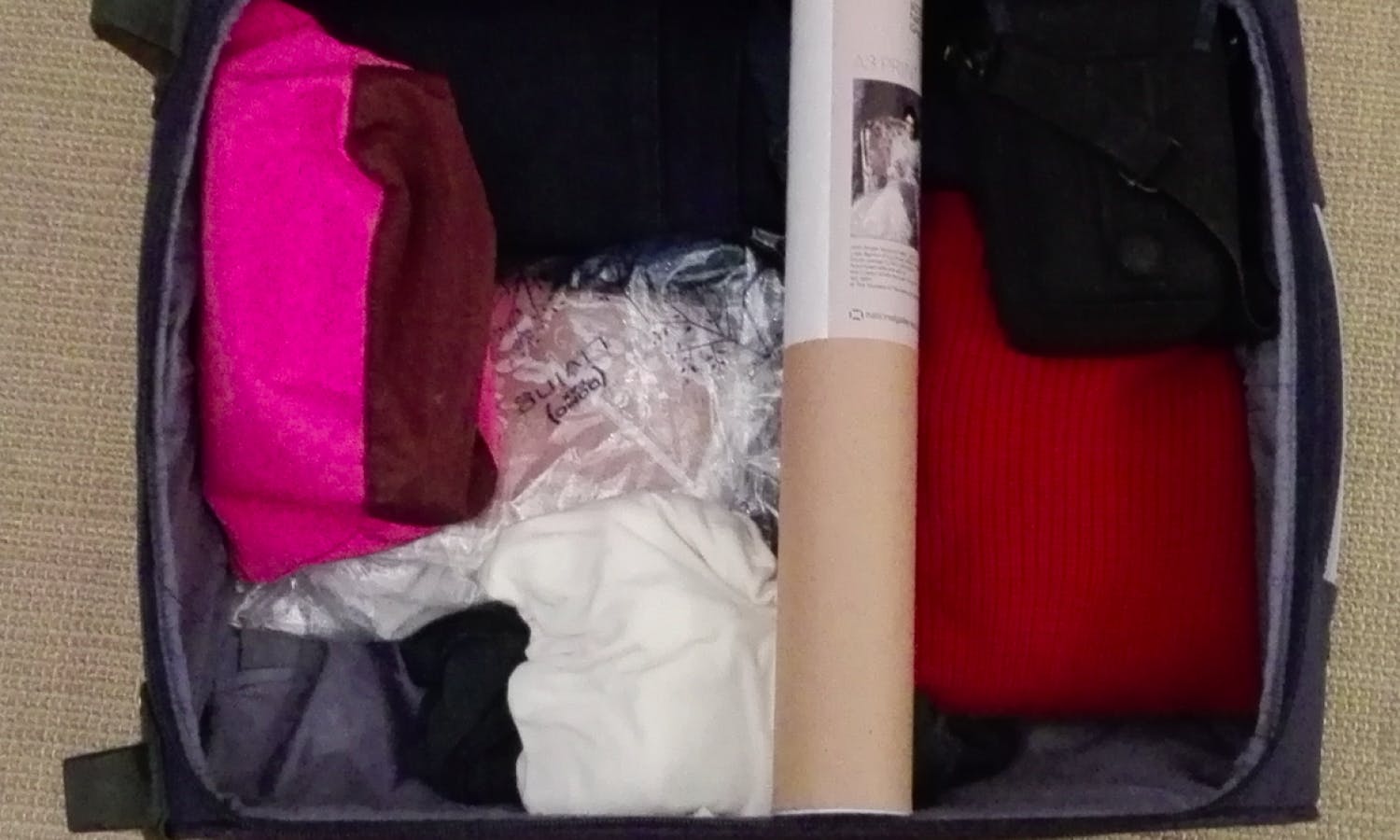
Step 2: Fill the empty spaces created by the clothing with less-flexible objects such as the toiletries.
Among the already positioned-items, we placed the most solid objects like the camera and hat, which was reversed so that the inside, when checked at the airport, we positioned inside the shoulder bag with a wallet and documents.
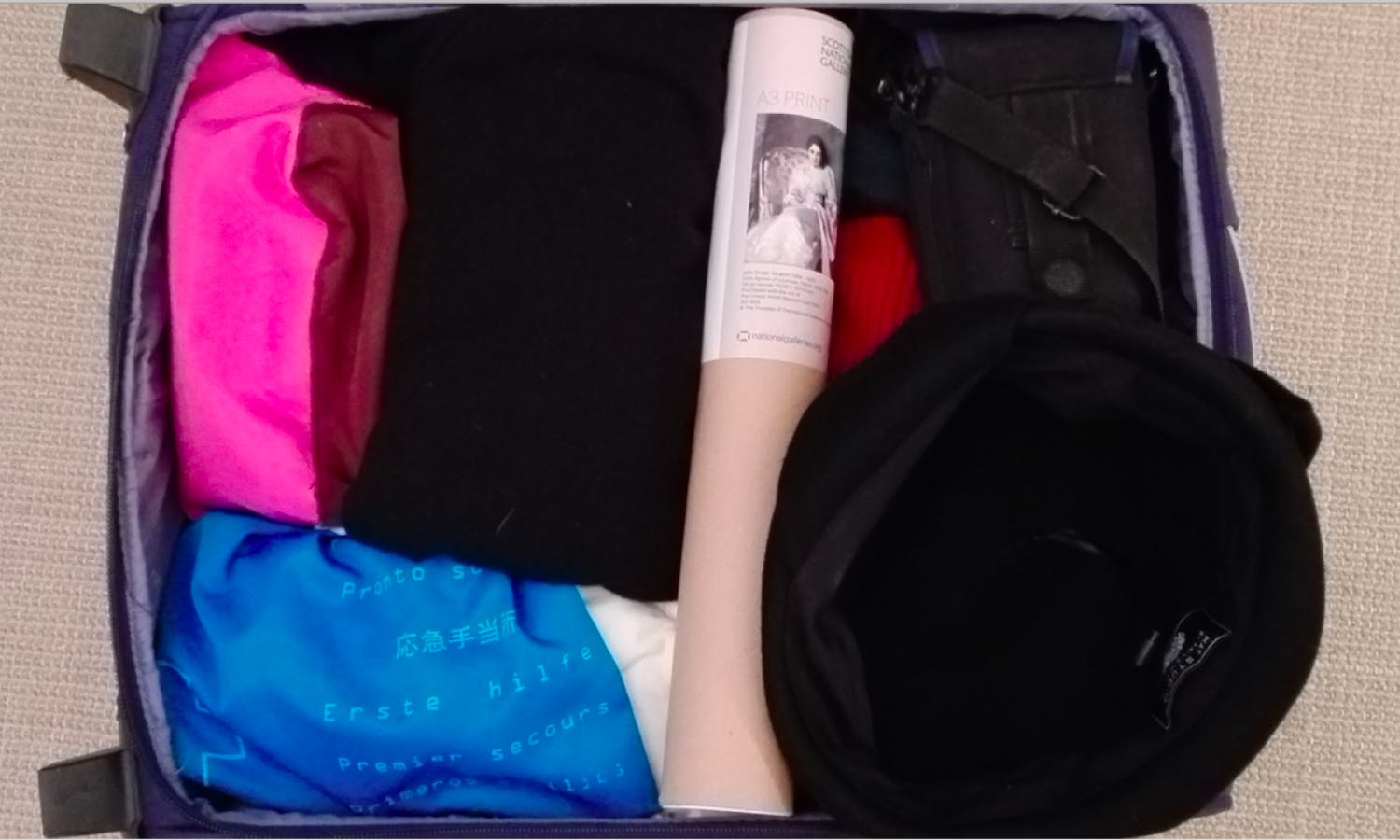
Step 3: Add the most solid objects such as the camera, and continue to “create” space such as by turning over the hat so that you can tuck it into the bag later
Finally, the most critical items were the poster in the protective pipe and the tweed coat’s hanger. There was adequate space to insert them as the guides, book and the brochures were attached to the inner lining of the suitcase’s outside pocket.

Step 4: Place the most critical and complicated objects in the remaining spaces.
You also need to add a good dose of improvisation and adaptability, which helped me resolve the tweed coat issue. It was obvious from the outset that it would have never fit in the suitcase, so I wore it on the plan and packed the leather jacket. I placed the tweed jacket’s nylon garment bag in the outside pocket along with the book. The Milan heat greeted me as soon as I landed at Malpensa, so I took off my coat and hung it on its hanger in the garment bag. My tweed coat made it home safely and my perfectly prepared suitcase made it on the plane without attracting any attention.
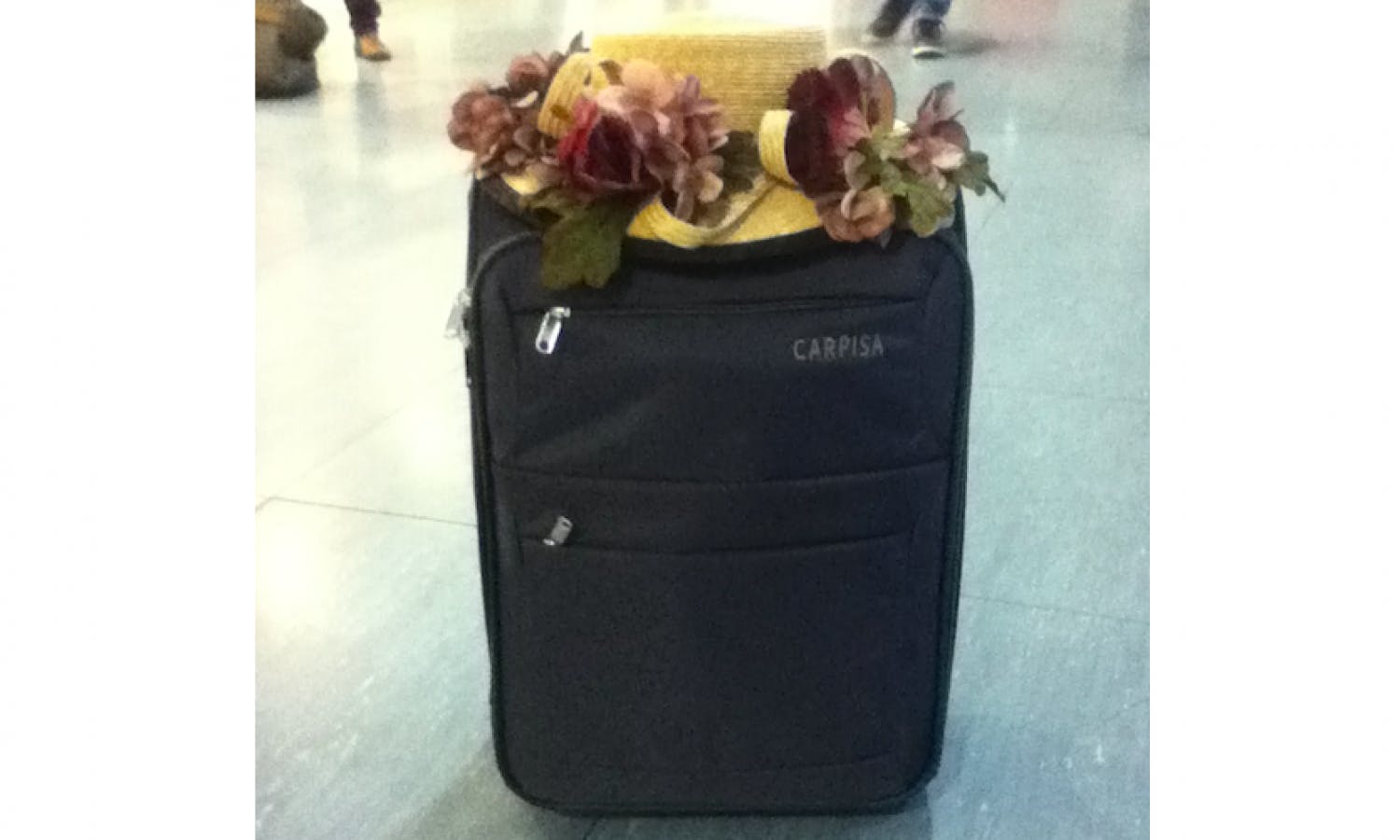
My new slender, unobtrusive carry-on makes it on to the plane, no questions asked.
